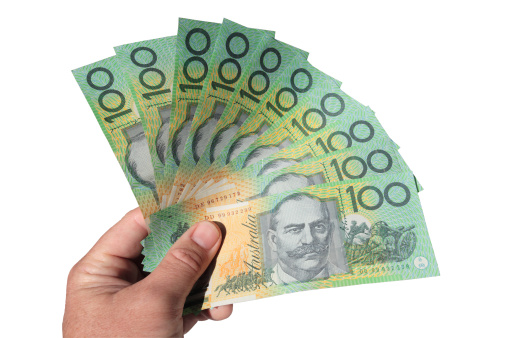Australian dollar gains on the RBA’s decision, and Governor Bullock rules out nothing on policy.
The Australian Dollar (AUD) retraced its recent losses on Tuesday. The AUD strengthened against the US Dollar (USD) as the Reserve Bank of Australia (RBA) maintained its Official Cash Rate (OCR) at 4.35% at its February meeting, as predicted. However, the AUDUSD pair has depreciated due to aggressive words from Federal Reserve Chair Jerome Powell, combined with lower commodity prices.
Australia’s retail sales increased by 0.3% in the fourth quarter, compared to 0.2% the previous quarter.
The Australian Bureau of Statistics issued Retail Sales (QoQ) figures on Tuesday, revealing an improvement with a 0.3% increase in the fourth quarter compared to the prior gain of 0.2%.
The RBA maintained the OCR at 4.35% during its February meeting, as expected.
The Australian economy is experiencing a cost-of-living crisis, and RBA policymakers appear to have limited room to raise interest rates further. Instead, the focus has shifted to when the central bank might start lowering interest rates. Investors will pay particular attention to RBA Governor Michele Bullock’s upcoming statement on the monetary policy outlook, hoping to gain further insight into the central bank’s stance and potential next steps.
RBA Governor Michele Bullock forecasted 2.8% inflation in 2025.
RBA Governor Michele Bullock noted, at a press conference following the interest rate announcement, that The Bank of Australia does not rule anything out when it comes to policy decisions. She stressed that the bank sees risks as balanced and is actively collecting evidence to confirm a return of inflation to the target rate. Governor Bullock voiced concern that the central bank may be on a limited path to accomplishing its goal of returning inflation to the target. She also mentioned that inflation is expected to be 2.8% in 2025.
The US dollar gained as the ISM Services PMI jumped to 53.4, exceeding the predicted result of 52.0.
The US Dollar Index (DXY) rose sharply following the Federal Reserve’s hawkish attitude, aided by strong ISM Services data for January. The ISM Services PMI rose to 53.4, exceeding both the consensus of 52.0 and the previous month’s reading of 50.5. Also, the ISM Services Employment Index experienced an improvement, moving from 43.8 to 50.5.
Federal Reserve Chairman Jerome Powell helped to bolster the US dollar by lowering expectations of a rate drop. Powell emphasized the necessity of tracking inflation’s steady progress toward the 2% core target. This position caused an increase in US Treasury yields, placing downward pressure on the AUDUSD pair.
Daily Market Movers: Australian Dollar falls on Fed’s aggressive tone.
The Australian Trade Balance (MoM) for January was decreased to $10,959 million from the revised number of $11,764 million in December.
In January, Australia’s Judo Bank Composite Purchasing Managers Index (PMI) rose to 49 from 48.1. The Services PMI improved, reaching 49.1 from the prior figure. of 47.9.
Aussie TD Securities Inflation (YoY) increased by 4.6%, compared to a previous increase of 5.2%.
Australian TD Securities Inflation (MoM) increased by 0.3% in January, down from 1.0% in December.
The Chinese Caixin Services PMI fell to 52.7 in January from 52.9 the month before.
US ISM Services Prices Paid climbed to 64.0 in January from 56.7 in December.
The US Services New Orders Index rose to 55.0 in January from 52.8 the previous month.
The US S&P Global Composite PMI fell marginally to 52.0 in January from 52.3 the previous month.









